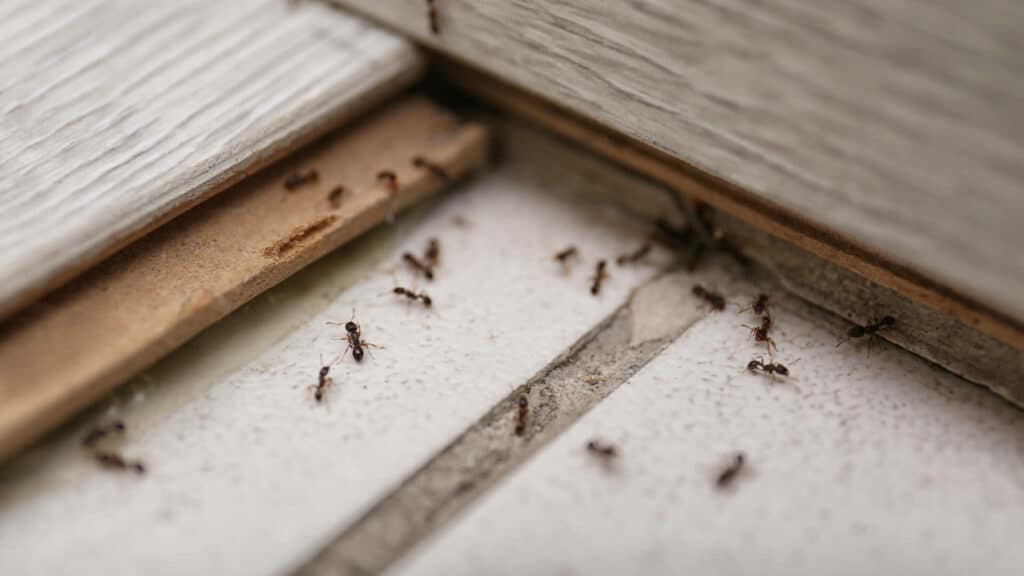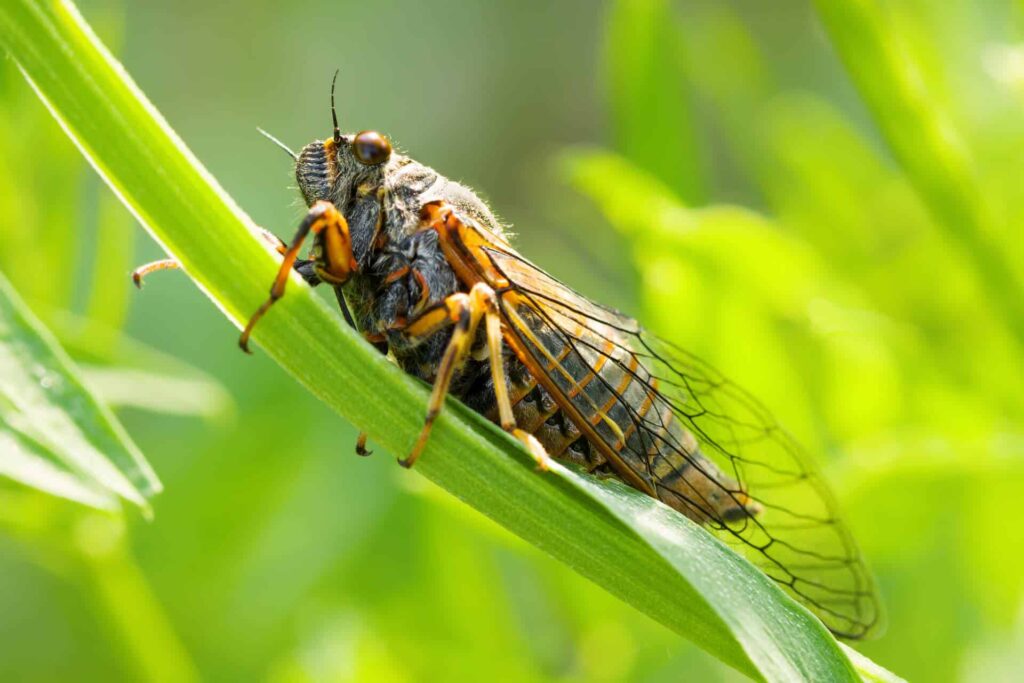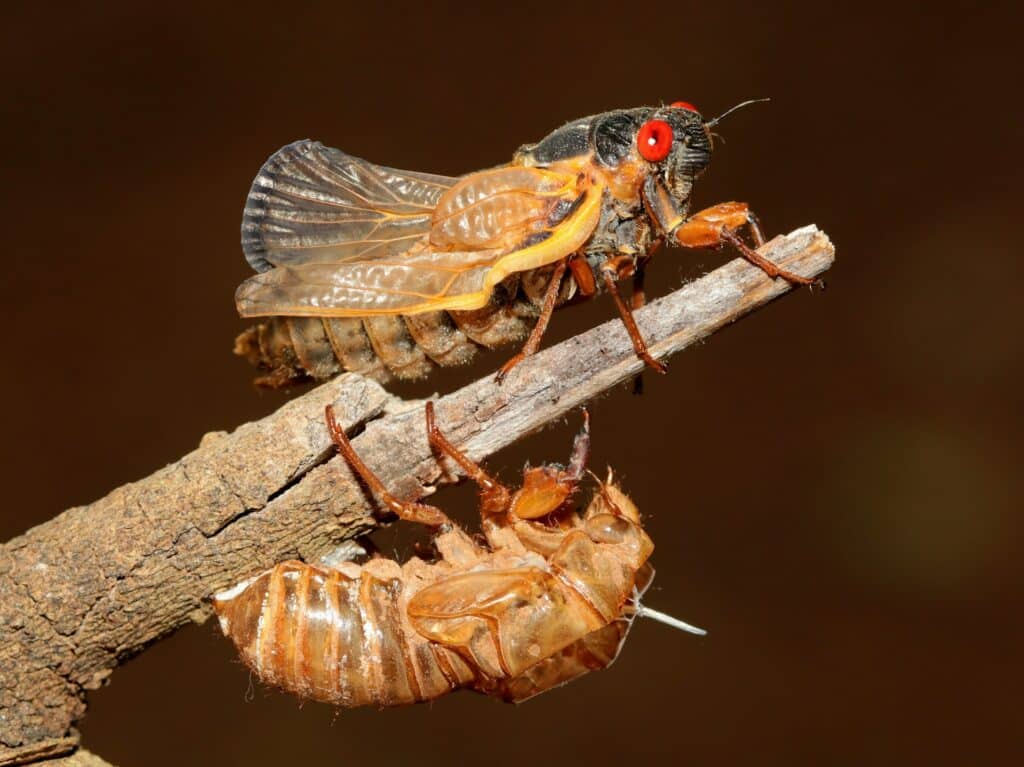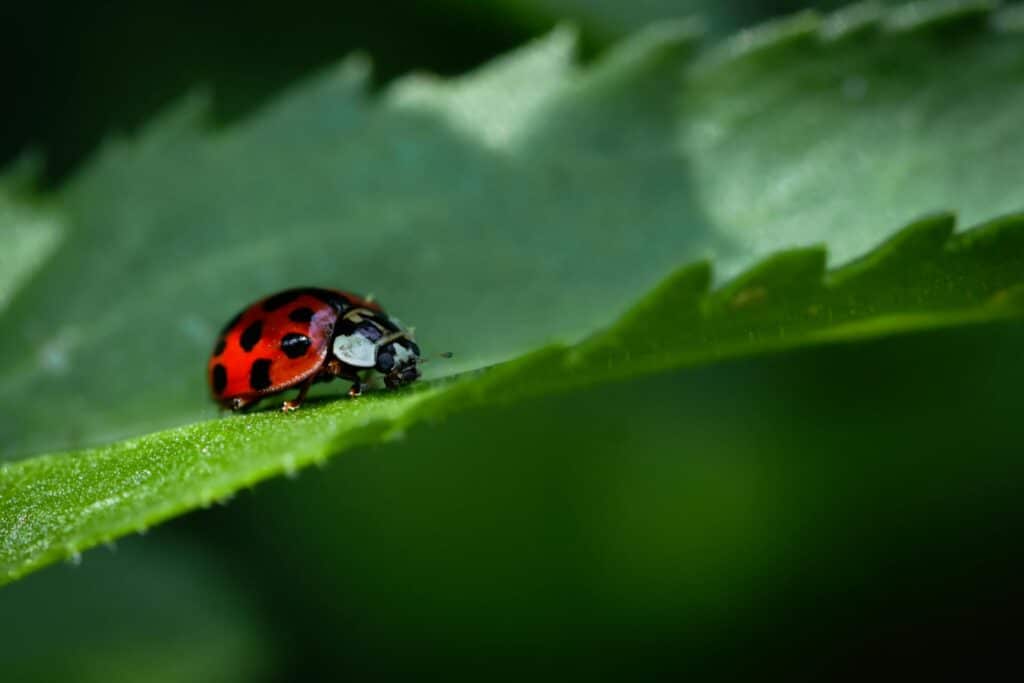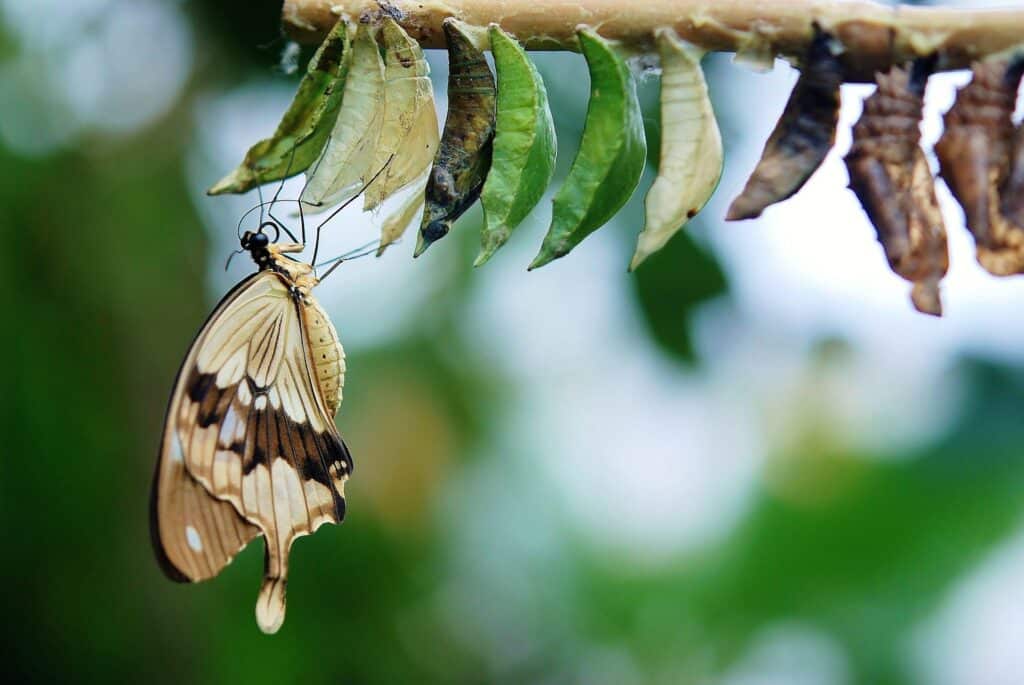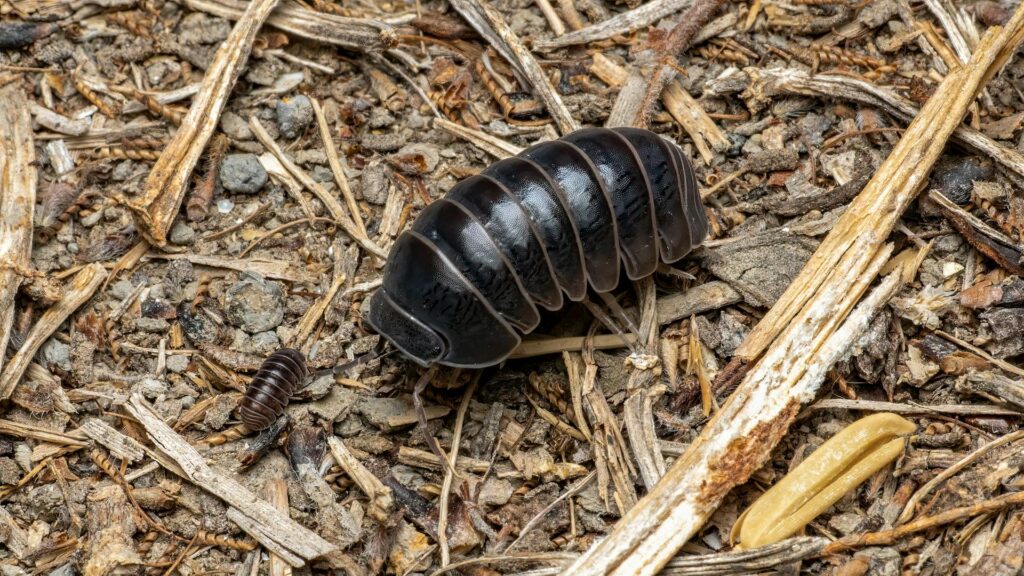Have you noticed tiny leaping spiders in your indoor garden? There are likely jumping spiders in your houseplants.
Despite their agility, jumping spiders are often misunderstood creatures. This article will explore their nature and address the common question, “Are jumping spiders dangerous?” It’ll also provide insights on how to manage their presence around your indoor plants.
Jumping Spiders in My Houseplants
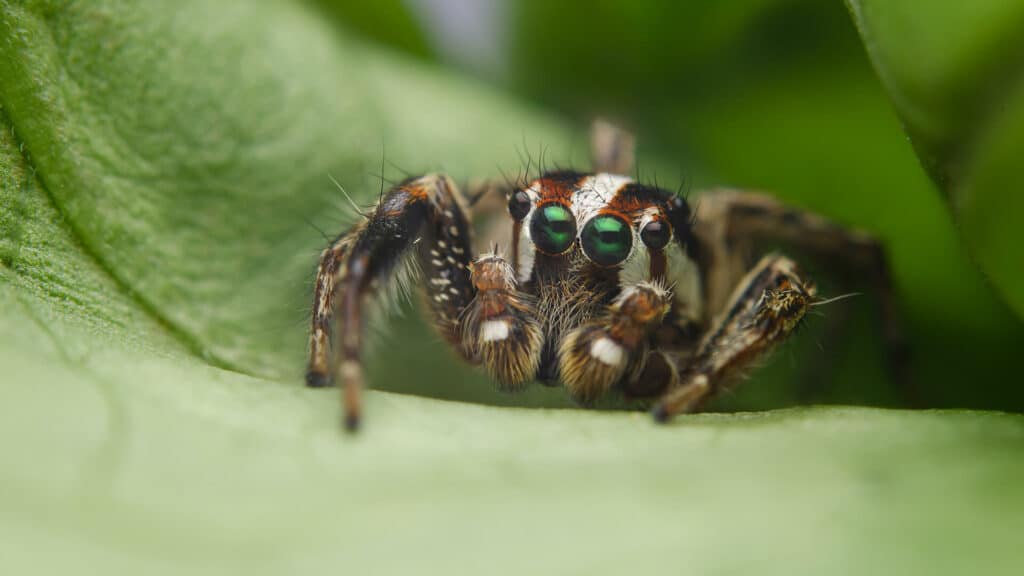
Jumping spiders are small, typically measuring between 1/8 to 3/4 of an inch. They have a compact shape and a distinctive pattern of four pairs of eyes, which give them excellent vision. In houseplants, these spiders are often seen sunning themselves on leaves or leaping from plant to plant in search of prey.
You can identify jumping spiders by looking for:
- Sudden Movement: They’re noticeable by their quick, jerky movements as they jump across spaces.
- Silken Retreats: Look for tiny silk retreats in the joints of plant leaves where they hide at night or during molting.
- Vivid Colors and Patterns: Many jumping spiders are brightly colored or have unique patterns.
Are Jumping Spiders Dangerous?
Contrary to common fears, jumping spiders are not dangerous to humans. They are non-aggressive toward people, and their bite is rare, typically only occurring if they are provoked and unable to escape. The bite of a jumping spider is usually harmless, with effects comparable to those of a mosquito bite in terms of irritation and redness.
Do Spiders Impact My Plants’ Health?
Jumping spiders are predatory by nature, feeding on a variety of common household pests, such as gnats, aphids, and fruit flies. This makes them beneficial, as they help control pest populations that could otherwise damage your houseplants. They do not feed on the plants themselves and are unlikely to cause any harm to your greenery.
Should I Get Rid of Jumping Spiders?
Given their beneficial role in controlling pests, there is usually no need to remove jumping spiders from your houseplants unless their presence is excessive. Coexisting with these spiders can be advantageous for your indoor garden.
Understanding Other Common Spiders Around Your Home
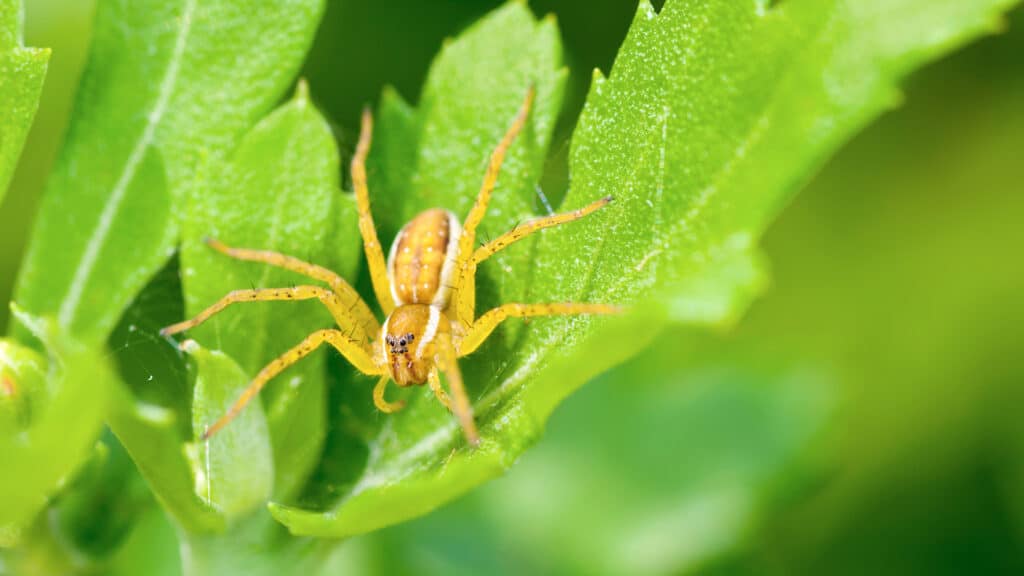
While jumping spiders in your houseplants can be beneficial, being familiar with other spiders you might encounter around your home is equally important.
Common types of household spiders include:
- American House Spider: Typically found in dark, secluded areas, these spiders are known for spinning tangled webs. They pose no harm to humans and actively contribute to controlling flies, mosquitoes, and other small insects.
- Wolf Spiders: Often mistaken for tarantulas due to their large size and hairy bodies, wolf spiders are ground dwellers that do not spin webs but instead hunt their prey on foot. They are generally harmless and tend to avoid human interactions.
- Cellar Spiders: Commonly seen in damp, cool places like basements or cellars, these spiders are easily recognized by their long, skinny legs and the messy, irregular webs they create. They are harmless and prey on small insects and other spiders, including venomous species.
- Brown Recluse: Recognizing this spider is critical because of its venomous bite. Marked by a distinctive violin-shaped figure on its back, the brown recluse prefers secluded, undisturbed areas. Although not aggressive, it can bite when threatened, which requires cautious handling.
Managing Spiders in Your Home
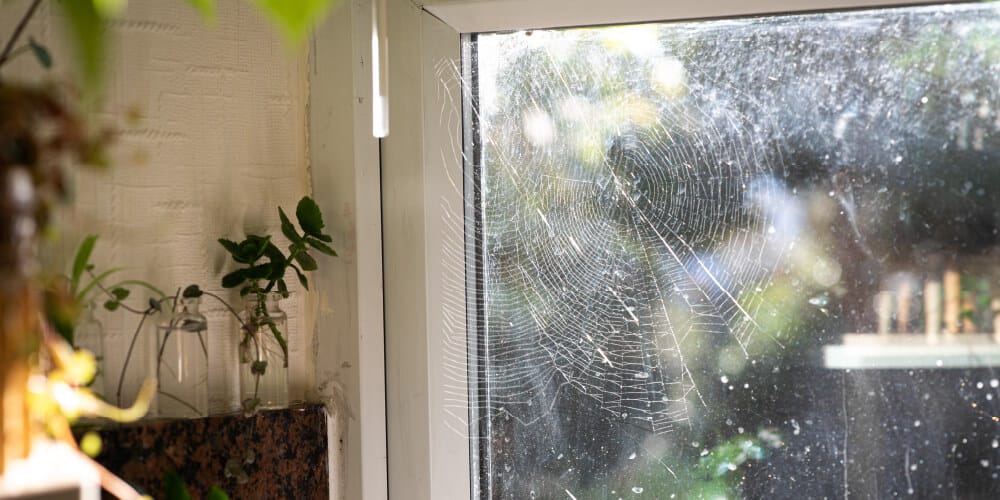
Reducing clutter in areas like attics, garages, and basements can prevent spiders from settling in. Regular cleaning and careful storage of items in sealed containers also discourage spiders from making themselves at home. Being mindful of these simple housekeeping tasks can help reduce the presence of spiders and provide peace of mind.
If you’re still unsure about the spiders in your houseplants or need more guidance on pest control in your home, don’t hesitate to reach out to Aptive Pest Control.
